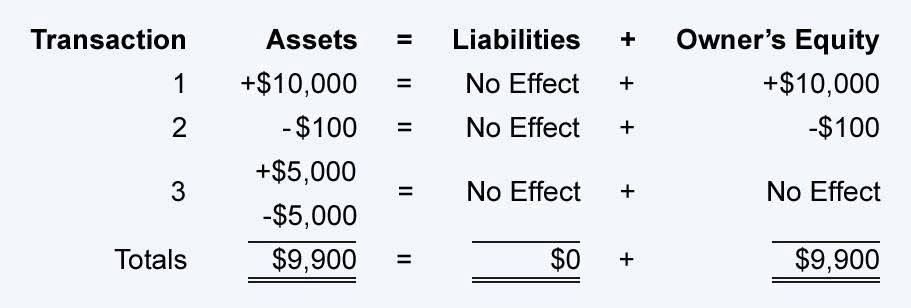Net Working Capital NWC: Formula, Ratio and Usages
Agile Vs Devops: A Full Comparison Bmc Software Blogs
December 20, 2023Najlepšie Slovenské Online Kasíno 2025
December 20, 2023
Conversely, we subtract an increase (positive change) because it represents a use of cash. It is an indicator of operating cash flow, and it is recorded on the statement of cash flows. And the cash flow is one of the important factors to be considered when we https://www.bookstime.com/ value a company.
How NWC Fits Into the M&A Process
- It usually means that there are more current assets like inventory, cash or receivables compared to current liabilities.
- Net working capital, often abbreviated as “NWC”, is a financial metric used to evaluate a company’s near-term liquidity risk.
- It provides insights into how effectively a company can meet its current liabilities with its current assets, making it an essential tool for assessing financial health.
- A company experiencing rapid growth might need to forecast significantly larger increases in working capital to support increased production and sales.
- The key is to find the optimal level that supports your specific operational needs while maximizing financial flexibility and efficiency.
The ability to predict and manage the change in net working capital free cash flow contributes significantly to a company’s overall financial strength nwc cash flow and resilience. Remember that change in net working capital free cash flow is a dynamic relationship requiring constant attention. It’s important to note that variations of the net working capital formula exist across different industries. For example, in the manufacturing sector, companies may include work-in-progress inventory in their current assets, reflecting the nature of production cycles.
Optimise inventory management

It shows how efficiently a company manages its short-term resources to meet its operational needs. Positive change indicates improved liquidity, while negative change may signal financial difficulties. For example, consider a manufacturing company facing challenges in collecting receivables from customers, leading to a significant increase in A/R.
Company

Similarly, on the liabilities end, obligations like accounts payable, short-term debt, and accrued expenses are also closely tied to cash flow. For example, effectively managing accounts payable by extending payment periods can delay cash outflow, thereby preserving cash. It represents the capital which the CARES Act company has to cover its short-term commitments and continue its operations. Positive net working capital indicates that the business has enough assets to cover its short-term debts, while negative net working capital may be a sign of financial struggles.
What factors can impact a company’s Net Working Capital?
For such a CapEx heavy business, they’ve improved the way their working capital is being used. And Apple’s Deferred Revenue is not increasing, suggesting that one of its major future growth themes — services — has a long way to go, whereas Microsoft’s transition is well underway. Apple, being more focused on the hardware side than Microsoft, should show a negative change in working capital.
- Effective NWC management involves balancing receivables, payables, and inventory to ensure smooth operations without excessive cash buildup or financial strain.
- Here’s how automation creates real-time transparency across cash, payables, and receivables.
- The working capital cycle formula is days inventory outstanding (DIO) plus days sales outstanding (DSO), subtracted by days payable outstanding (DPO).
- Since the company is holding off on issuing payments, the increase in payables and accrued expenses tends to be perceived positively.
- But it is important to note that those unmet payment obligations must eventually be settled, or else issues could soon emerge.
Working Capital Ratio Formula
They are useful in estimating the amount and timing of cash flows and, therefore, of working capital. The technical, or textbook, definition of working capital is the difference, on the balance sheet, between a company’s current assets and its current liabilities. All else being equal, a business with a lower NWC requirement will increase its free cash flow generation and its value. Understanding a company’s Net Working Capital requirements and Cash Conversion Cycle metrics is necessary for investors to have a fully informed view to forecast a company’s cash flows. To overcome working capital shortages, businesses can employ various strategies.
Cash Application Management
Purchase price adjustments can also go in the seller’s favor if they deliver working capital above the target. NWC targets are a frequently misunderstood concept in M&A and a common reason for post-closing disputes and litigation. Developing a working capital target that’s acceptable to both parties and clearly defining NWC in the purchase agreement are crucial steps in avoiding this. The general rules of thumb regarding the impact of working capital changes on cash flow are shown below. All else being equal, negative net working capital (NWC) leads to more free cash flow (FCF) and a higher intrinsic valuation.

Centralized system to streamline payments, ensuring smoother working capital operations. Gain real-time visibility into cash positions to maximize liquidity and working capital efficiency. Our Cash Management Solution automates the reconciliation process between bank statements and internal financial records, reducing manual effort and errors and increasing cash management productivity by 70%. With our treasury and risk solutions, treasury professionals gain instant, personalized insight into their cash positions with unparalleled global visibility. With a negative NWC of -$150,000, the store may struggle to meet short-term obligations, face liquidity issues, and need external financing, limiting its ability to grow and operate smoothly.
How do current assets and current liabilities impact net working capital?
In summary, Net working Capital isn’t just a financial metric; it’s a strategic tool for decision-makers. By understanding its significance and applying it judiciously, businesses can navigate short-term challenges and position themselves for sustainable growth. Remember, the optimal NWC varies based on industry, business model, and growth stage. In summary, mastering the concept of Net Working Capital empowers stakeholders to make informed decisions about investments, credit policies, and operational strategies. Remember, it’s not just about the numbers; it’s about the financial health of the business. The fundamental purpose of even discussing working capital is about cash flow needs of a business.
